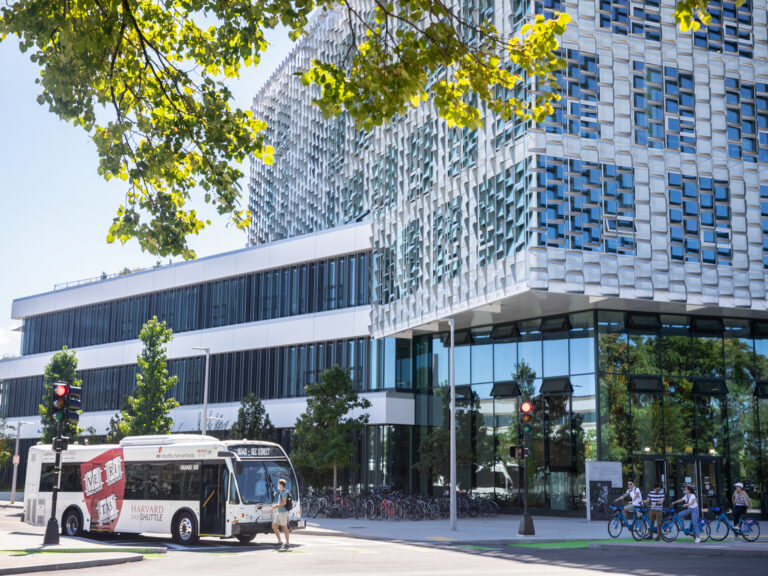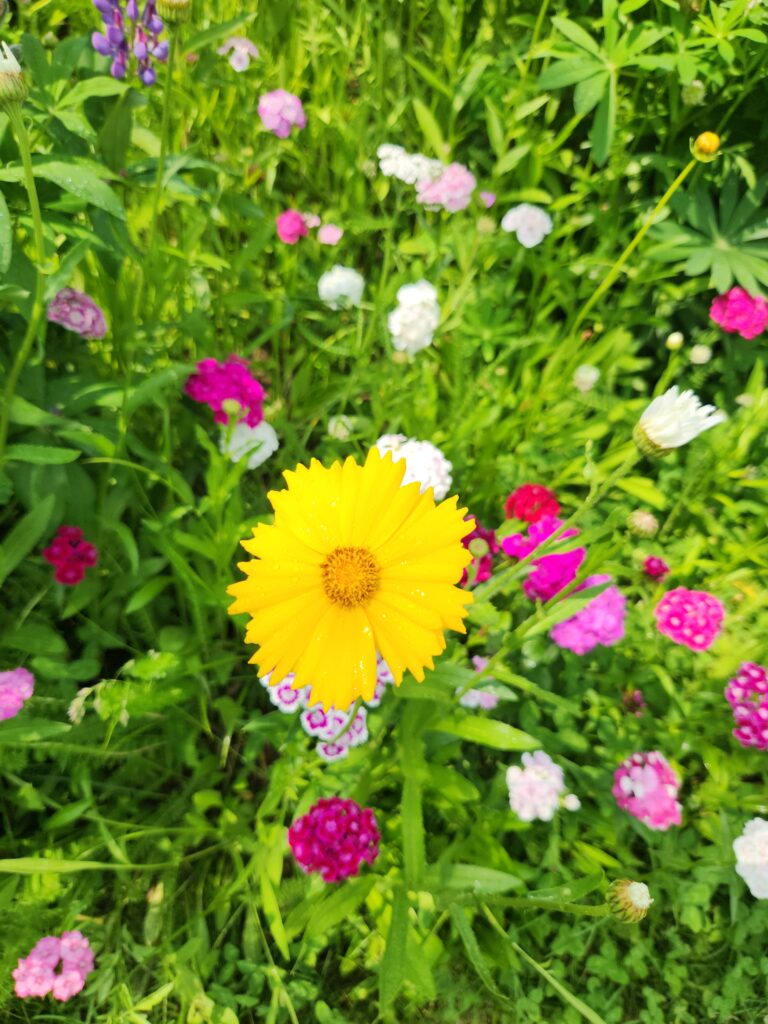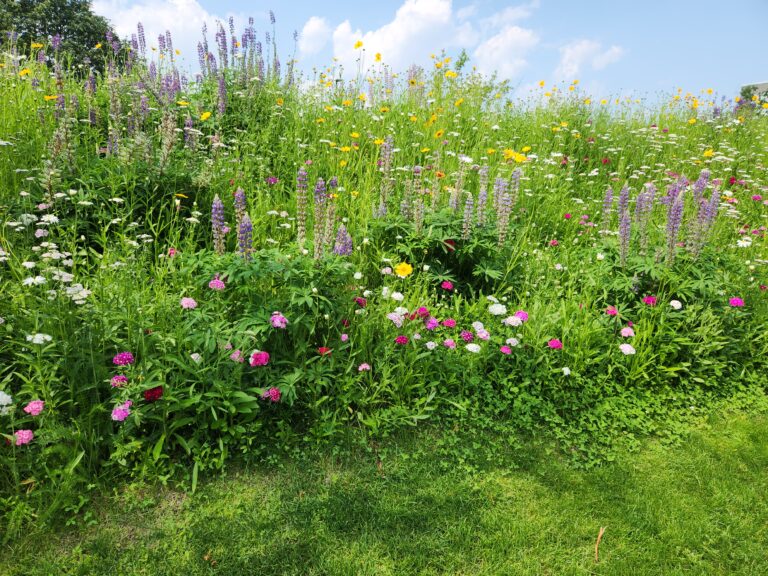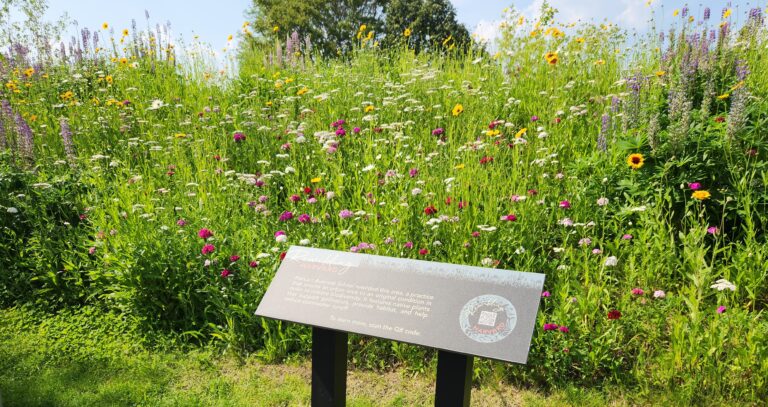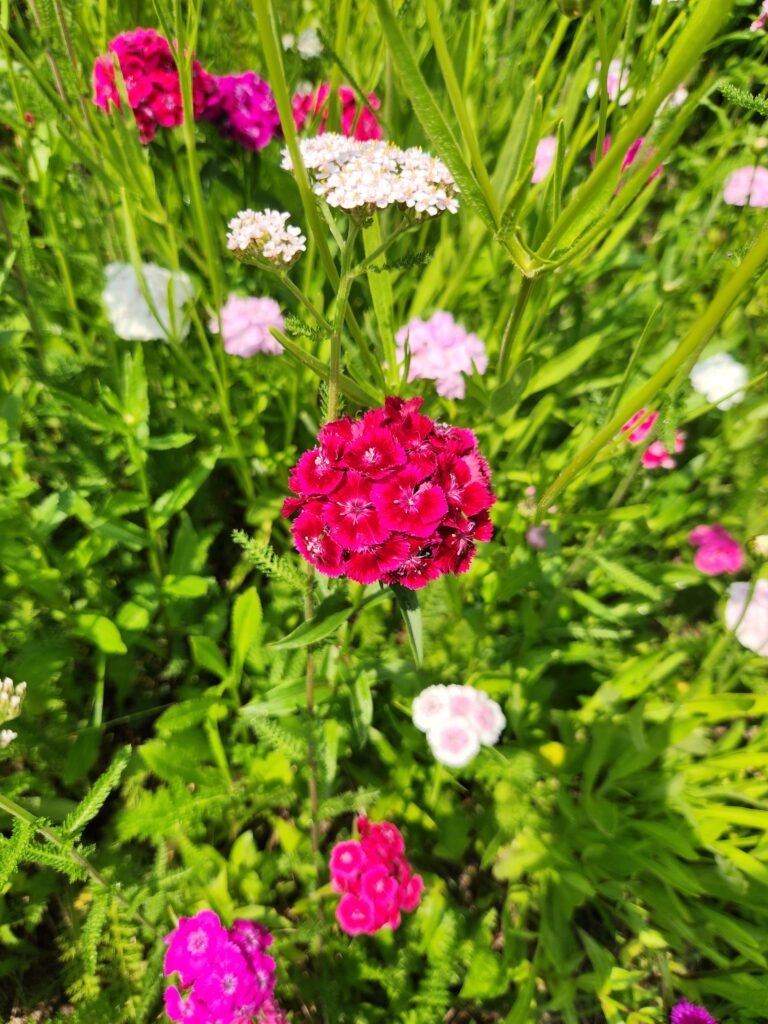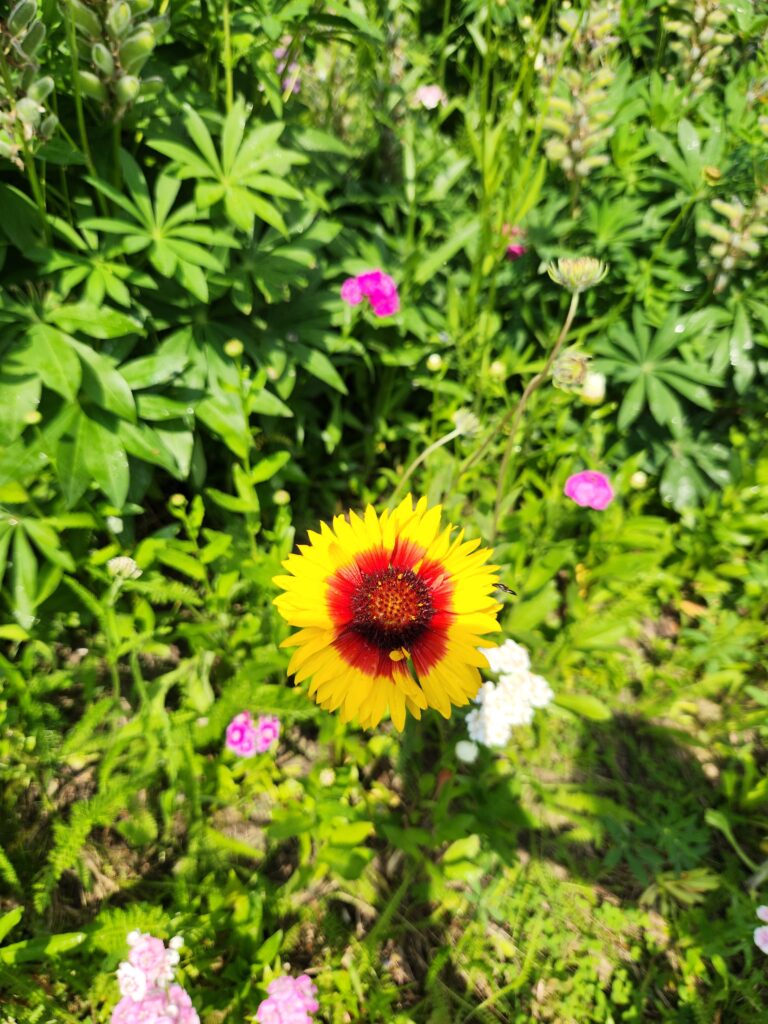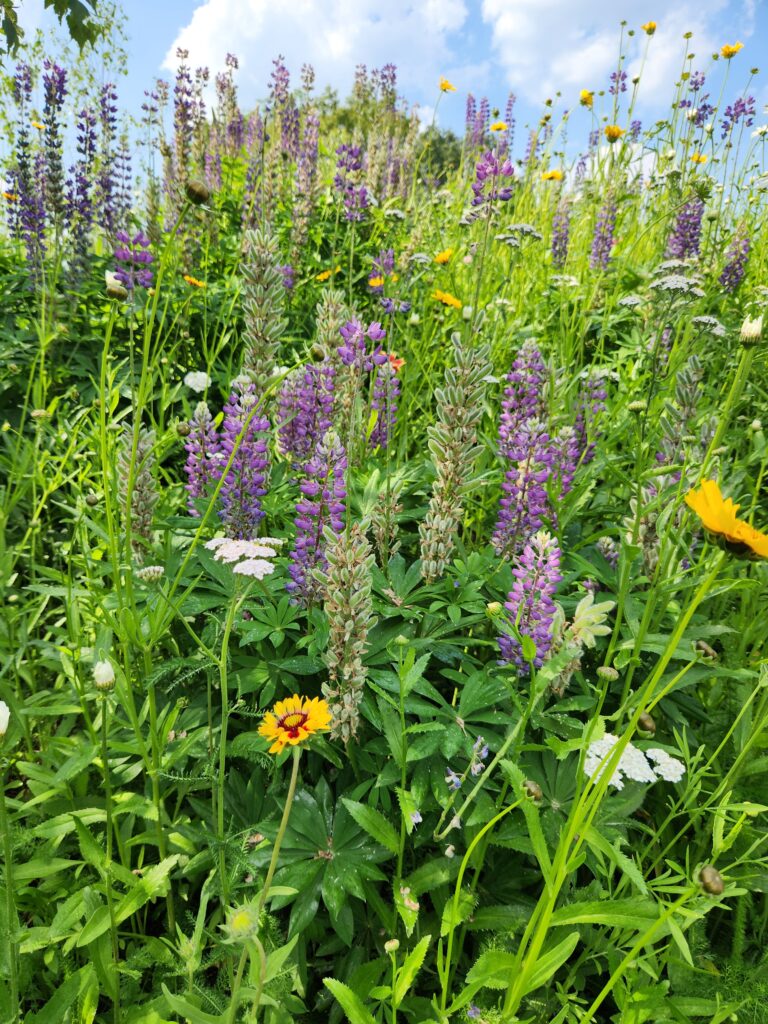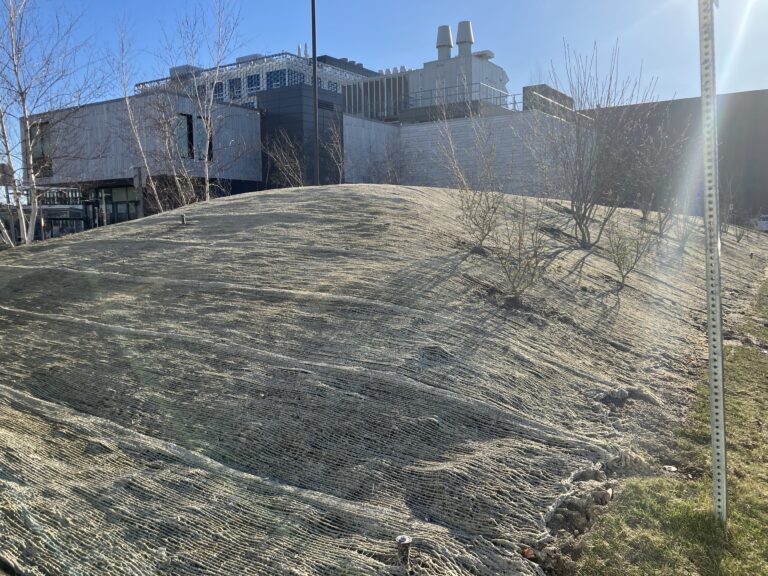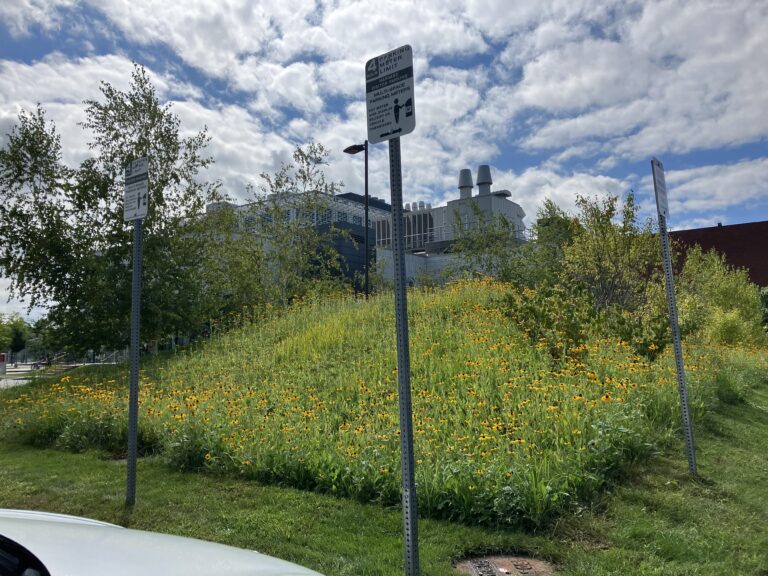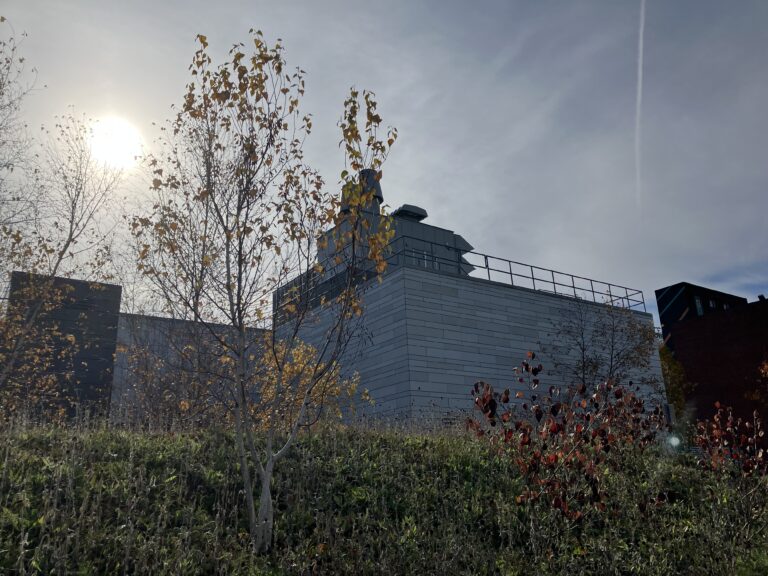Transforming a small parking lot island into a flourishing, rewilded ecosystem
A small piece of the HBS landscape was rewilded in the spring of 2023; this modest project contributes to the larger goals of the UN Decade of Ecosystem Restoration (2021-30), intended to restore ecosystems throughout the world. This pilot was a partnership between the 2022 FAS course HIST 1973: Re-wilding Harvard, HBS Operations, Reed Hilderbrand Landscape Architecture, and Cambridge Landscaping. As the class noted, “Our site is a small island in the center of a parking lot, but it is not isolated from its surroundings. It can be seen from all sides and has the potential to be visually, ideologically, and ecologically impactful by standing out from its urban context and by functioning as an ecosystem ‘steppingstone,’ connected to other green sites in and around the Harvard Business School.”
Pictured: The grassy mound before rewilding. (Google Street View, October 2018)
The area Operations selected for rewilding was previously a grassy mound, originally created from soil relocated during the construction of the Pagliuca Harvard Life Lab in 2016. However, the direct sun and lack of shade meant that this grass required high levels of irrigation in addition to regular lawncare maintenance. Now rewilded, the mound hosts native and naturalized species that can thrive in the sunlight and will require less maintenance and irrigation. The class identified the following goals for the rewilded design: support pollinators and local wildlife along with improving soil quality, drainage, and shade on the site. Vegetation offers the further benefits of capturing carbon dioxide, reducing air pollution, and cooling in the summer through transpiration.
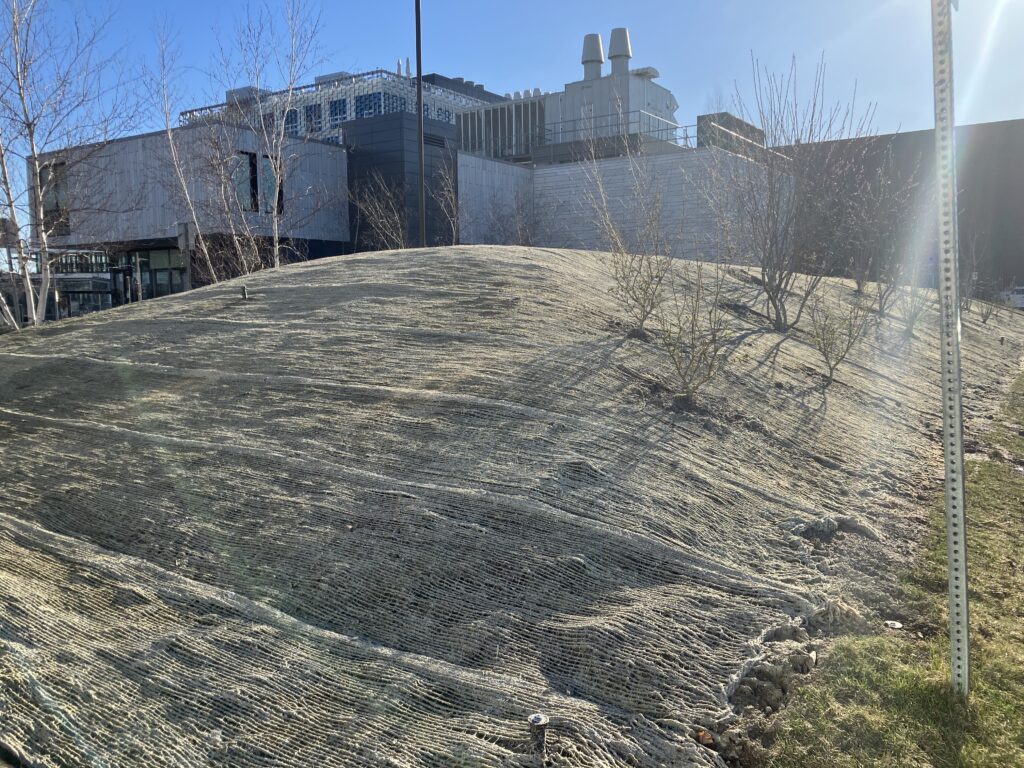
With those goals in mind, the students provided a suggested planting plan and HBS finalized a design with Cambridge Landscaping planting serviceberry trees, grey birches, spicebush, Judd Viburnum, Virginia Rose, and a mix of wildflowers: Perennial Lupine, Blue Flax, Siberian Wallflower, Sweet William, Lance-Lyd Coreopsis, Purple Coneflower, Shasta Daisy, Black-Eyed Susan, Perennial Gaillardia, White Yarrow, Mexican Hat, Prairie Coneflower, Sweet Alyssum, Gayfeather, Dwarf Evening Primrose, Dwarf Columbine, Smooth Blue Aster. As a rewilded space, the landscape will grow and change over time.
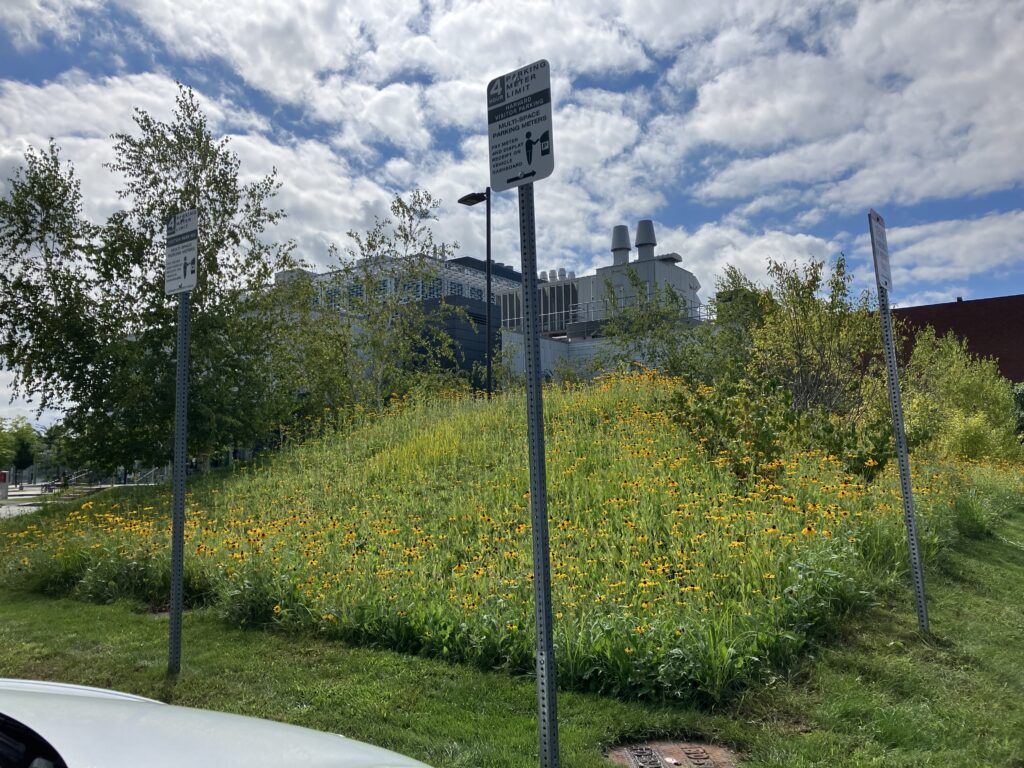
The mound is a pilot, contributing to the existing network of projects at Harvard and beyond demonstrating the comparable benefits of larger and smaller rewilded spaces.
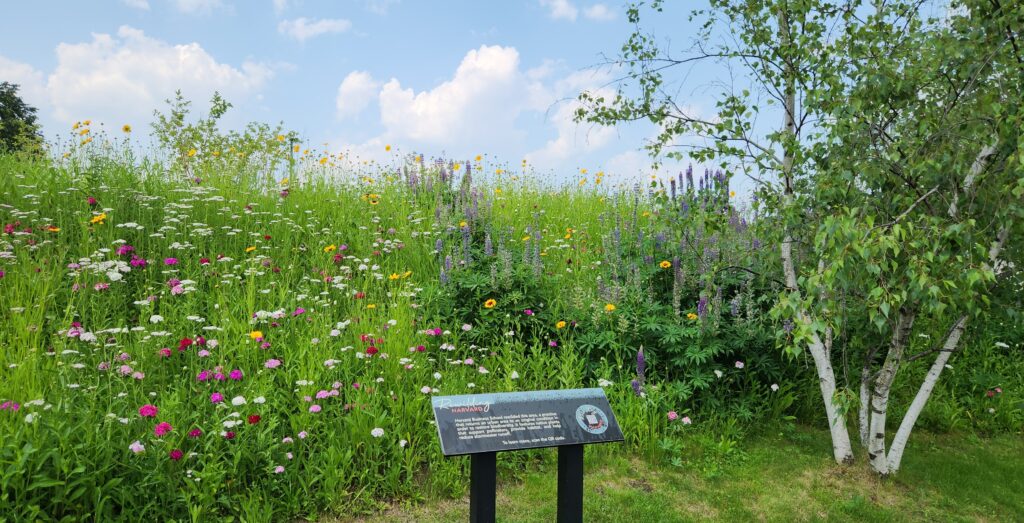
Similar pilots across Harvard’s campuses include the Harvard Micro-Prairie Project and the rewilding exhibit in front of Harvard Museum of Natural History. To learn about other sustainability efforts at Harvard Business School, visit Sustainability at HBS.
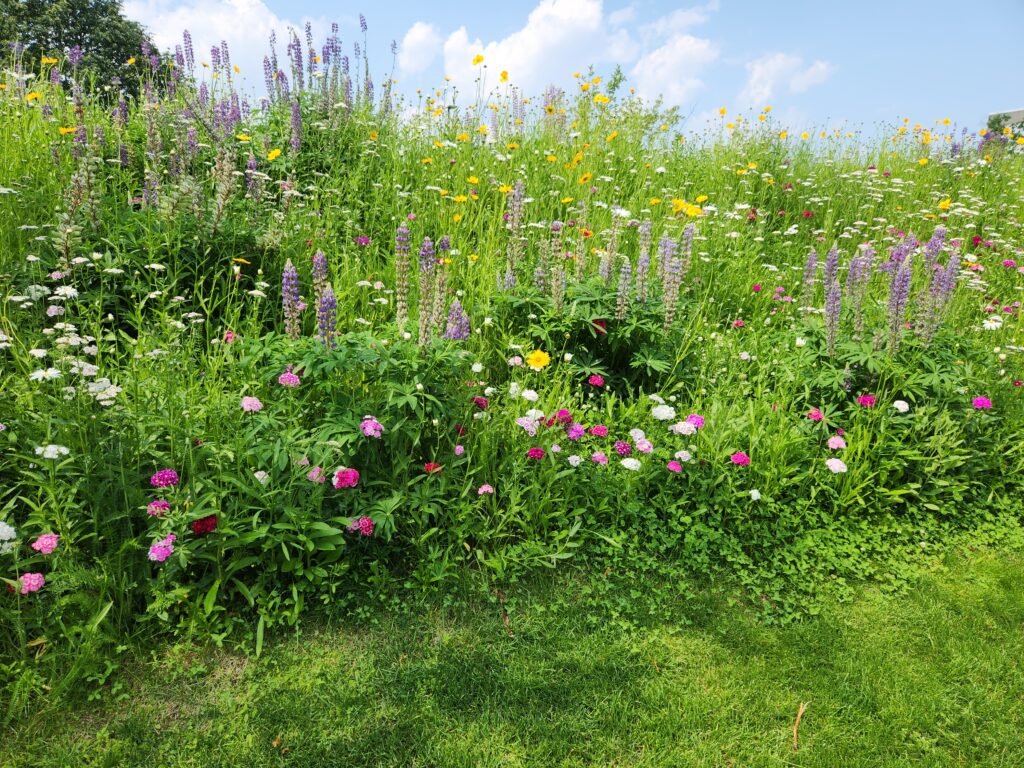
How We Operate
Harvard is accelerating new systems that enable healthier, low-carbon living—creating systems that can be scaled and adopted more broadly.
